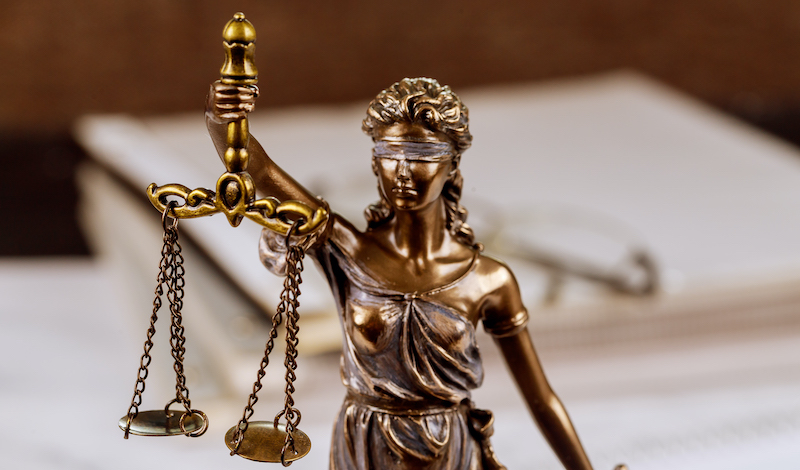
To combat corruption more effectively, policymakers need to approach it as a regulatory problem.
Regulation used to be considered the first and most powerful tool for combating and preventing corruption. Indeed, the public still thinks that establishing conflicts of interest rules, adopting more severe sanctions for infringements, introducing intrusive controls, and requiring compliance programs and anticorruption systems are the proper way to react when corruption scandals occur and corruption needs to be kept under control.
Upon closer inspection, though, there is a reverse side of the coin. Paradoxically, not only do rules not always help to combat corruption, but rules can breed corruption. In fact, corruption is often carried out because of regulatory controls.
Legislators and regulators should consider that laws and regulations wittingly or unwittingly provide opportunities for rent seeking and can be frequently used as tools for profit, sometimes illicit profit. When a regulation establishes administrative activities and controls, for example, it makes public agents more vulnerable to bribery or other illicit exchanges.
At the end of the day, rules are integral to corruption because corruption presupposes, like other kinds of illicit behavior, both the existence of rules and their ineffectiveness.
This insight casts new light on a host of anticorruption policies. Many of these policies had been developed in the last part of the last century by many national governments following design recommendations from global institutions. The policies currently focus downstream on corruption in regulated sectors, which involves the participation of public agents who may potentially be involved in corruption. Using these policies to prevent corruption requires chasing violations and investing in a specialized anticorruption bureaucracy that operates in public agencies, anticorruption bodies, and private firms.
And yet, even though preventing corruption is right and proper, adverse consequences unfortunately sometimes flow from anticorruption policies. These policies, for example, can impose huge costs and administrative burdens.
Moreover, anticorruption regulations may backfire because increasing the size of monetary penalties does not always deter undesired behavior. Instead, increased penalties often results in higher bribes.
Furthermore, unreasonably rigid controls can generate non-compliance in the long run. Anticorruption policies require bureaucratic activity, but bureaucracy can be one of the causes of corruption, in a sort of vicious circle. Regulations that are too strict and detailed sometimes promote defensive bureaucratic responses that do little to stop corruption. Perhaps worst of all, anticorruption policies may lead to difficulty in recruiting honest and competent people in government as overly pervasive regulation has been considered a disincentive for honest and competent individuals to accept public offices.
Ultimately, anticorruption policies risk being reduced to tools that achieve an appearance of prevention rather than real prevention.
What if we start over, then, by considering corruption as simply a special kind of regulatory failure?
A shift in the way in which governments respond to corruption would produce important operational consequences. If rules can be determinants of corruption, and if regulated entities can use rules as tools to make a profit, then regulators and public officers have a special responsibility: They must adopt and implement anti-corruption rules cautiously and ensure that the application of these rules will be monitored at an administrative level. Regulations that advantage specific interests should be traceable and transparent. Creative compliance should be predicted, as much as possible. And anticorruption measures should be monitored to check on how they are working in concrete settings.
This approach requires an integrated regulatory anticorruption strategy that combines well-known and emerging tools and is enriched by contributions from behavioral sciences. Such a strategy would involve four features
First, effective anticorruption regulation calls for the use of better regulation tools, such as regulatory simplification as well as ex ante and ex post assessment of legislation and regulation.
Second, successful anticorruption efforts need to ensure transparency about the interests affected by legislation and involved in the process of making law
Third, regulators should seek to “corruption proof” new regulations by assessing them for potential corruption and implementing preventive mechanisms before the regulations are enacted.
Finally, regulators need to undertake anticorruption management of their existing stock of regulations. Anticorruption bodies should have the authority to scrutinize sensitive legislation and regulation to find ways to reduce opportunities for corruption. For example, they should be able to propose a limit on, or even to eliminate, a subsidy program that has been identified as a source of corruption, or to propose ways to strengthen the program’s anticorruption controls.
And to make regulatory anticorruption really effective, two additional conditions need to apply.
The first consists of a more resolute approach to end the vicious circle between excessive regulation and corruption. Policymakers should simplify current rules and regulations, which would make full compliance more convenient and reduce opportunistic use of regulation and creative compliance. They should also establish mechanisms to strengthen controls and sanctions as well as other traditional anticorruption tools.
The second consists of collecting and using data to improve anticorruption policies. Governmental agencies could, for example, translate criminal databases into administrative language to harness preexisting data.
Unfortunately, record-keeping at every level of the criminal process, from policing to sentencing, is rarely designed to respond directly to key questions that could inform regulatory improvements, such as: Which specific legislation, statute, or regulation was involved in the corruption? Which public agency and officer was part of the corruption scheme? What controls have been established? Which controls have not worked? Responding to these questions can make a great difference in effective anticorruption regulation.
To reduce corruption, policymakers must reconsider it from a regulatory perspective. This reconsideration requires recognizing that corruption may be nurtured by overwhelming legislation, that simplification is indispensable to prevent corruption, and that some rules facilitate corruption more than others. It also means cultivating expertise and developing better information about the rules that fuel corruption or are failing to stop it.
The aim is challenging and new. It means preventing infringements and corruption not only before they occur—by chasing violations—but before they can even be conceived—by managing risk.
Portions of this essay are adapted from the author’s recent book, Corruption from a Regulatory Perspective.




